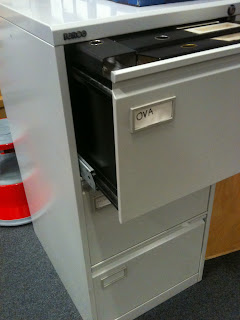 |
| © Christa Holka |
1 February 2014 – 31 December 2014
Voluntary position, with expenses paid
Following the success of Iniva’s first Animateur Roshini Kempadoo (2013), Iniva’s Stuart Hall Library is seeking proposals for the second Animateur to work with the Library over a period of up to ten months during 2014.
The role is intended to establish an exchange of knowledge between the artist, curator or researcher, Iniva and its Library staff. The Stuart Hall Library Animateur will have the opportunity to:
- Explore the Library’s printed, archive and audio-visual material for the artist/researchers/curator’s creative and scholarly publishing/exhibition ambitions.
- Generate intellectual and creative activity in collaboration with Library staff.
- Further develop networks of existing and potential Library users.
- Assist in identifying how the Library’s collections and archive can be made more widely available
This voluntary role would suit a researcher/artist/curator whose current work resonates with that of Iniva and the Stuart Hall Library. We are looking for someone who has:
- Experience of using archives and special collections libraries for research and artistic purposes.
- Interest in collaborating with Library staff to promote the Stuart Hall Library and its collections, including contributing towards talks and events.
- Knowledge of Iniva’s history, its activities, the Stuart Hall Library and its collections.
We recommend that the Animateur commits their time to the Library for the equivalent of one day per week to undertake their research and liaise with Library staff, contributing towards projects and events.
Please submit a CV and a proposal of 500 words to Sonia Hope (Library Manager) and Roshini Kempadoo (Photographer, Media artist and Lecturer) detailing the ways in which your role as the second Stuart Hall Library Animateur would:
- Expand an artistic/scholarly research project you are developing.
- Strengthen existing, and establish new networks between the Library, its users and other institutions, locally and internationally.
- Promote the Library collections through talks, events and other communication channels.
‘My work here in the last year has not only been a pleasurable experience but also an inspirational one. Working from the Stuart Hall Library facilitated a crucial creative thinking space to work through my own ideas whilst developing a better international perspective on visual art and culture. As an artist, sources of inspiration for my own projects were artists’ and art critics’ material – such as the recent exhibition catalogue Caribbean Art at the Crossroads of the World (2012), or Zineb Sedira’s artwork Silent Sight (2000) found in the Iniva audio-visual archive. As a scholar working on current chapters and articles for publication, conceiving and helping to develop the Stuart Hall Library Research Network and symposium as an inter-generational place for discussion of artists and critics work – has been invaluable to generate and listen to current conversation and thinking about the visual arts.
Being based in the Library through the year is not only a quiet, comfortable and supportive alternative to a studio or office, it is more crucially, a knowledge base and specialised resource about the question of international visual art that engages critically with its circulation, production and cultural agency. The role of the Animateur is one I would recommend to anyone who is interested in international arts based research whether critic, scholar or artist.’
Roshini Kempadoo (December 2013) – 1st Stuart Hall Library Animateur for Iniva
For further information see the Iniva website and the Stuart Hall Library Blog.
Deadline for proposals: Friday 31 January 2014
Please send to Library@iniva.org

